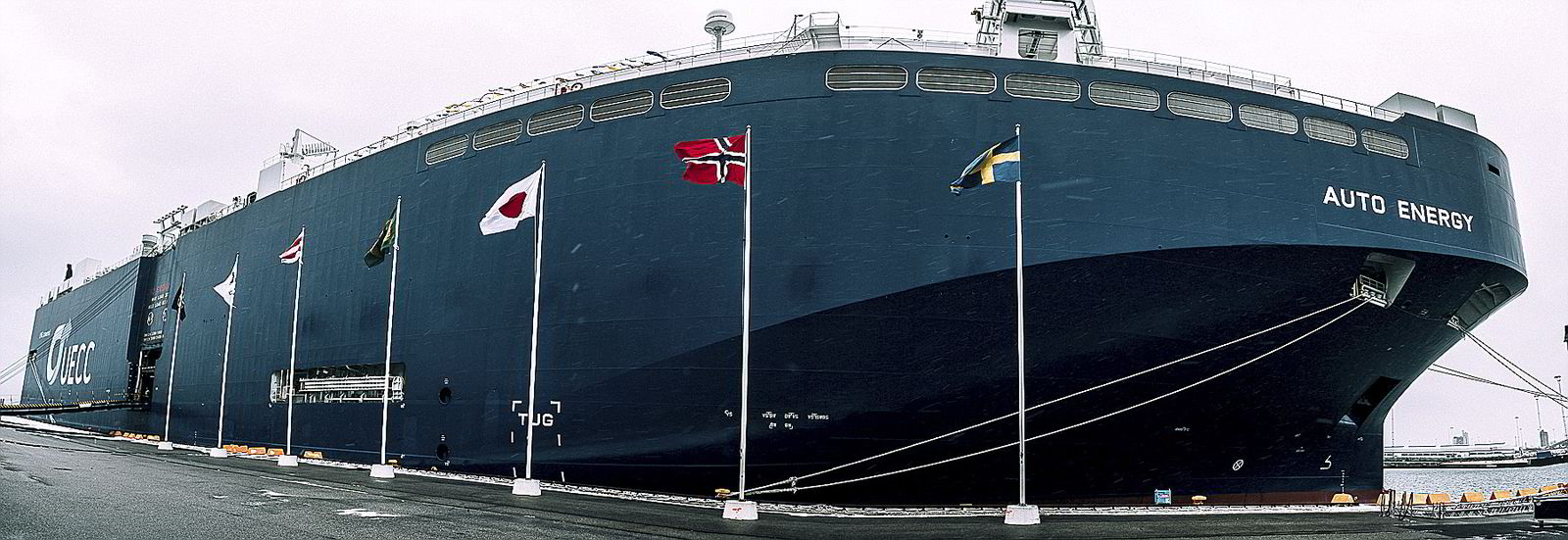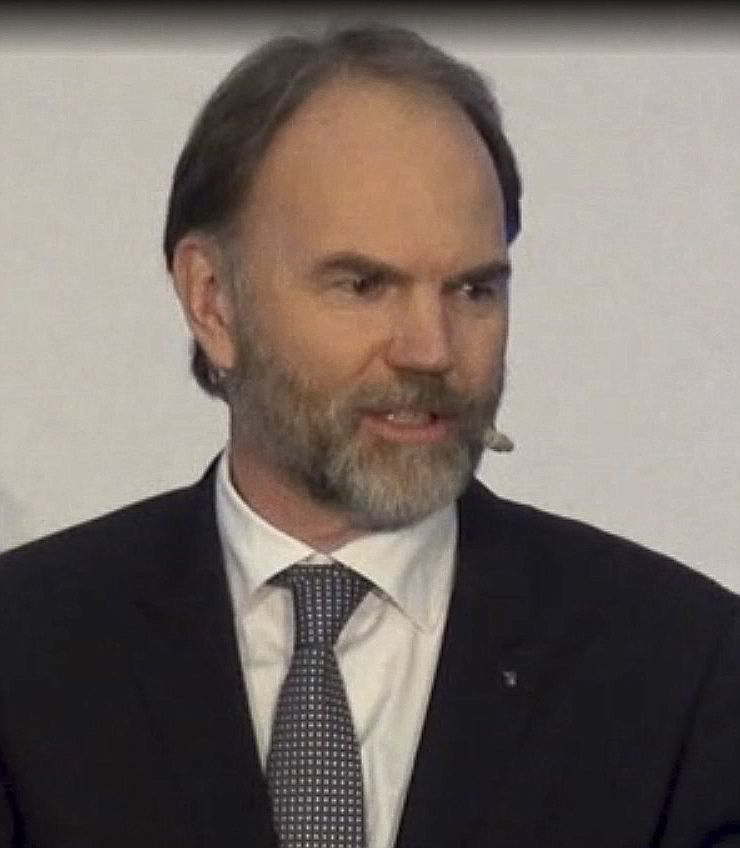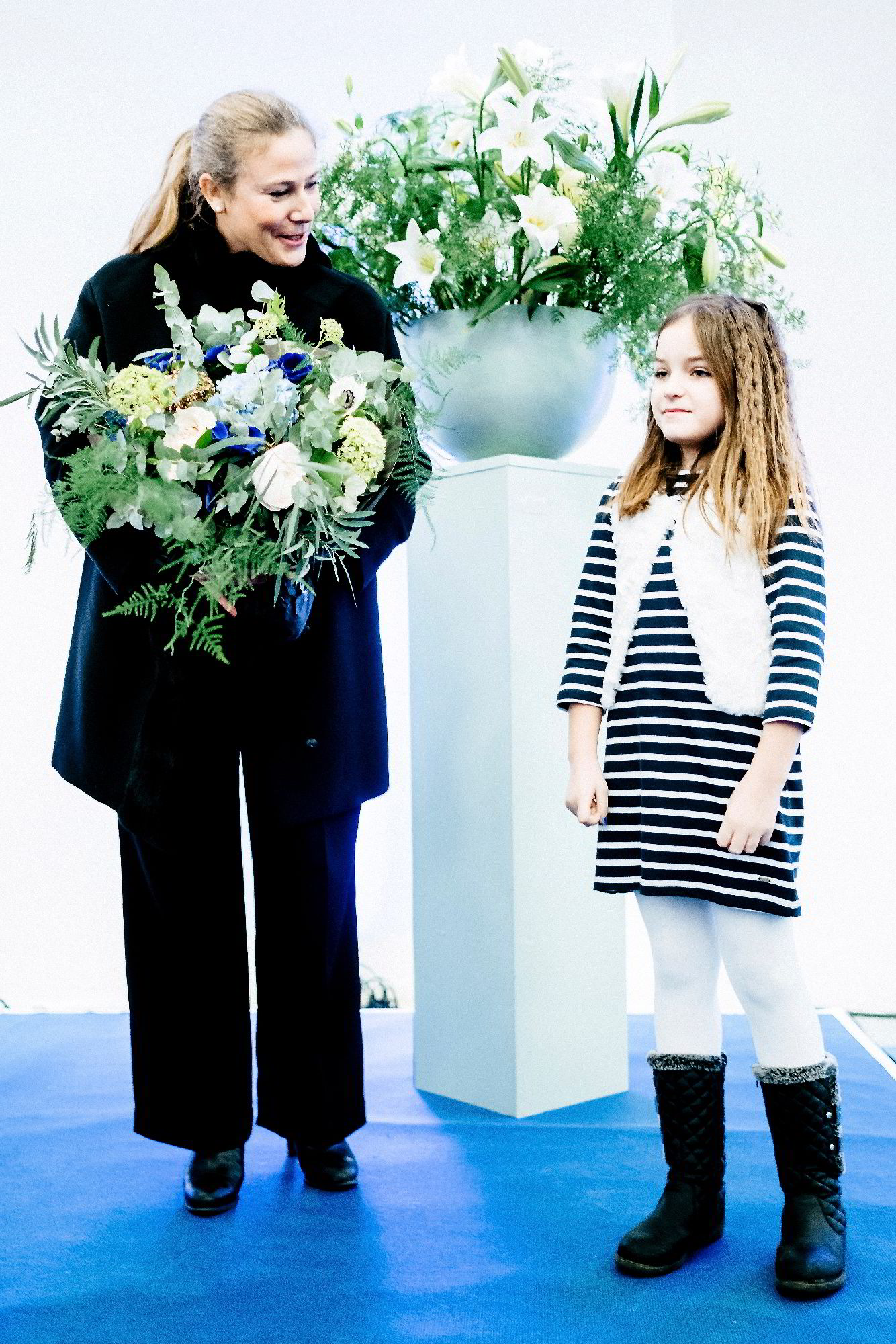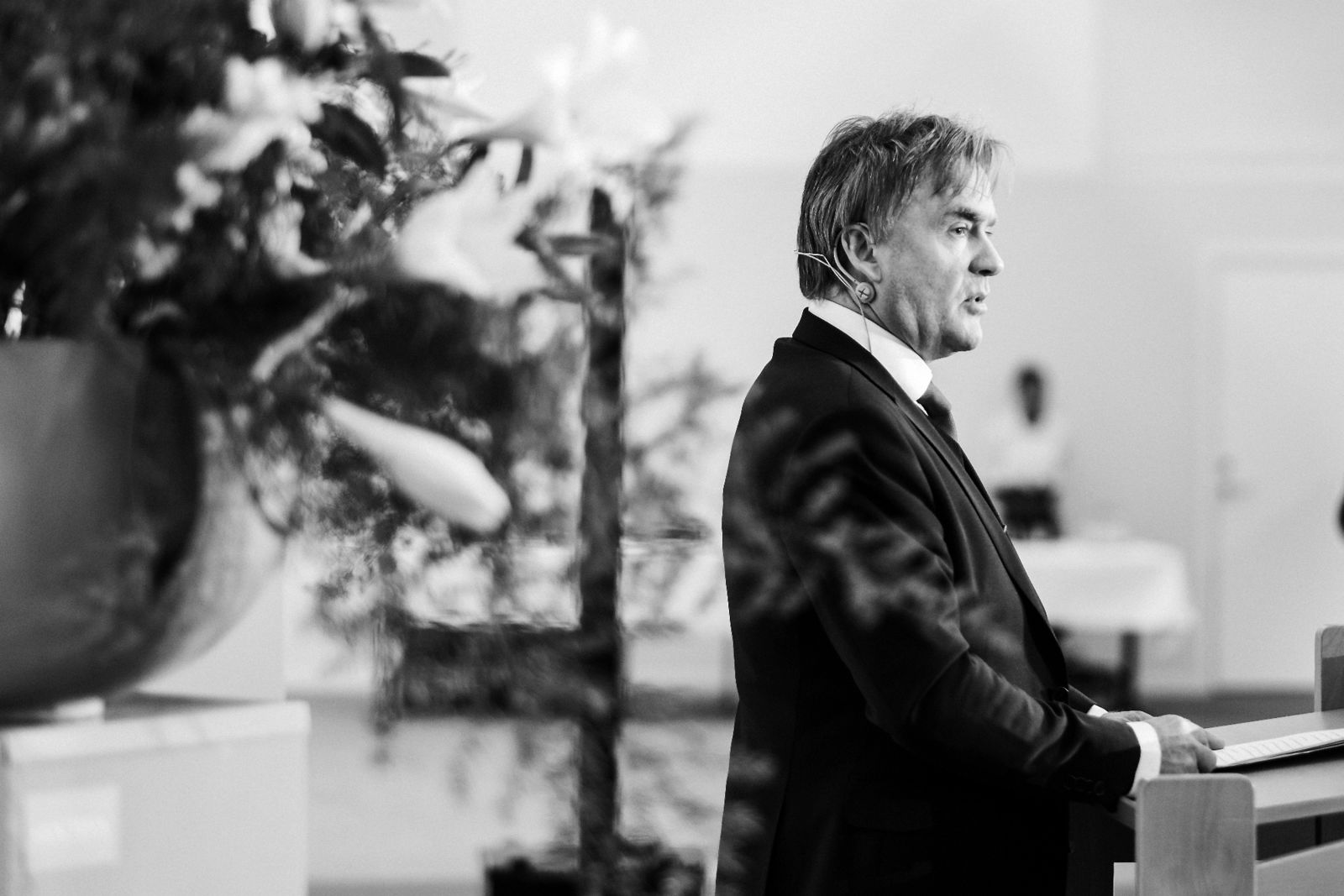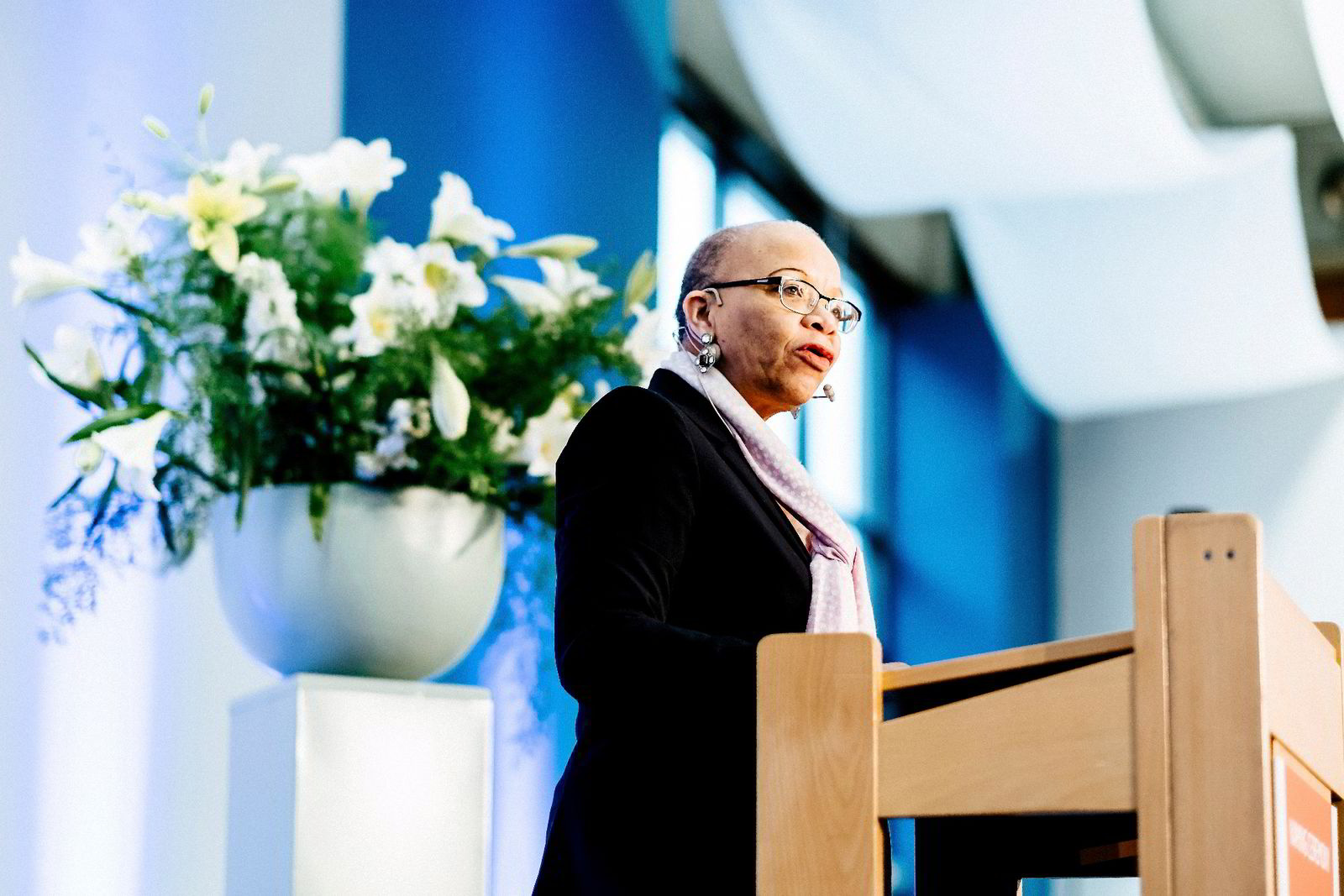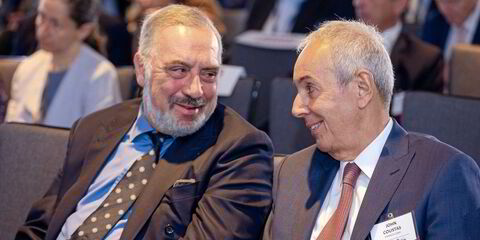The ship is European shortsea ro-ro operator United European Car Carriers (UECC)’s second LNG-powered pure car/truck carrier (PCTC).
“It’s a perfect day outside to be inside,” UECC chief executive Glenn Edvardsen told guests in the tent shielding them from the elements.
The 4,000-car-equivalent-unit vessel is sister to the Auto Eco, which was delivered late last year from Nantong Cosco KHI Ship Engineering (Nacks) in China.
Designated Swedish/Finnish ice-class 1A Super, both are designed for year-round trading in the Baltic and can break ice up to 1.5 metres thick.
As the world’s first and largest PCTCs using LNG as a fuel, their key goal was to reduce harmful emissions, Edvardsen said. The result is “a triumph of engineering and international co-operation” that exceeds existing emissions regulations. Three auxiliary engines can run on LNG in addition to the main engines.
Edvardsen also noted the ships’ flexible deck configuration enables them to carry high and heavy cargo and “almost any kind of rolling stock”.
Joint UECC owners Wallenius Lines and NYK Group were represented by Takao Kusakari, senior advisor and former president and chairman of NYK Line; Svein Steimler, executive vice-president and chief operating officer of NYK Group (Europe) and group corporate officer; and Wallenius owner and chairman Jonas Kleberg, together with company president Anders Boman and senior vice-president Anders Thyberg.
Local dignitaries included Malmo mayor Katrin Stjernfeldt Jammeh; Johan Rostin, chief exeutive of Copenhagen Malmo Port; and Dr Cleopatra Doumbia-Henry, president of Malmo-based World Maritime University.
Last ceremony 30 years ago
The last naming ceremony to take place in Malmo was of the 23,000-dwt tanker Nord Skagerrak in November 1987 at the Kockums yard. Kleberg said he was in Malmo at the time with his family, as Wallenius was also building ships at Kockums. They were “pioneering vessels in their time, designed for long service”.
Kleberg said the Auto Energy’s name was appropriate given that his wife and the vessel’s godmother, Eva Kleberg, is a “very energetic” woman. Given the strength of the wind, “she had to crush the bottle almost by herself”.
He admitted to feeling emotional in view of the 20-year journey since “we starting to talk about propulsion systems and how to fuel ships in the future”.
“Some people still don’t understand what it [emissions] is all about, so our task is to educate,” he added. “This is a global project and a great step towards fully sustainable shipping.”
Kleberg concluded with a greeting from Crown Princess Victoria of Sweden. “As an ambassador for the Baltic Sea, she wished great success for the event,” he said.
Rostin said vehicle throughput at Malmo is currently 400,000 cars per year and the goal is 600,000.
He added that sustainability must be viewed holistically, both land and sea. For example, he said the Drogden shipping channel in the Oresund has a draught limitation of 7.5 metres today “but if we got 9.5 metres that can save seven to nine hours of sailing time” for larger vessels and reduce emissions.
As a so-called European Union (EU) “core port” — one of 84 among the EU total of about 1,800 ports — Malmo must have an LNG plant in place before 2025. “This will be the future,” Rostin said.
UECC donated SEK 200 per person attending. Both Wallenius and NYK matched that figure. The total contribution by all three companies was SEK 60,000.
